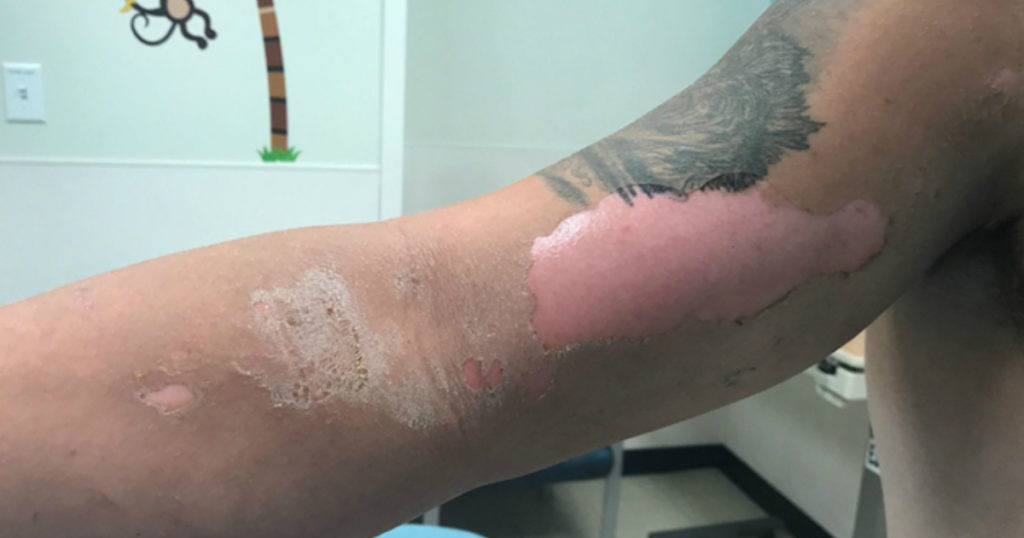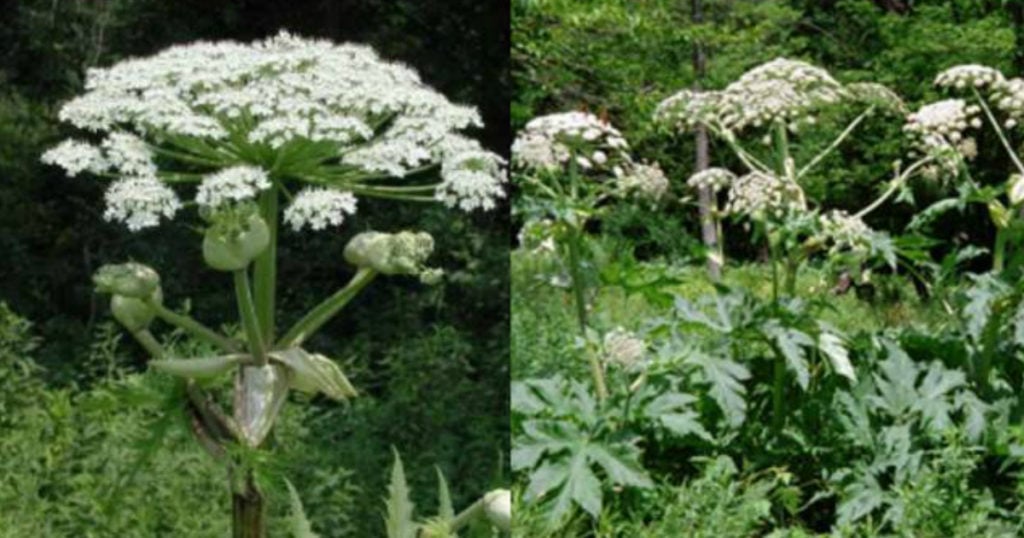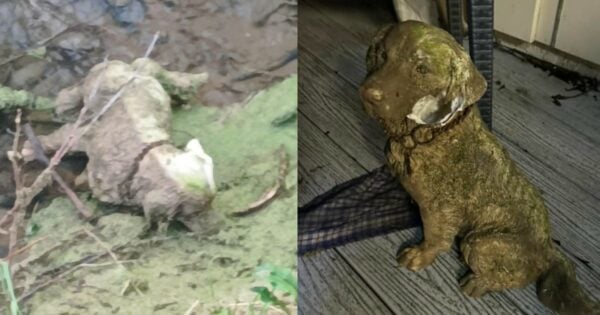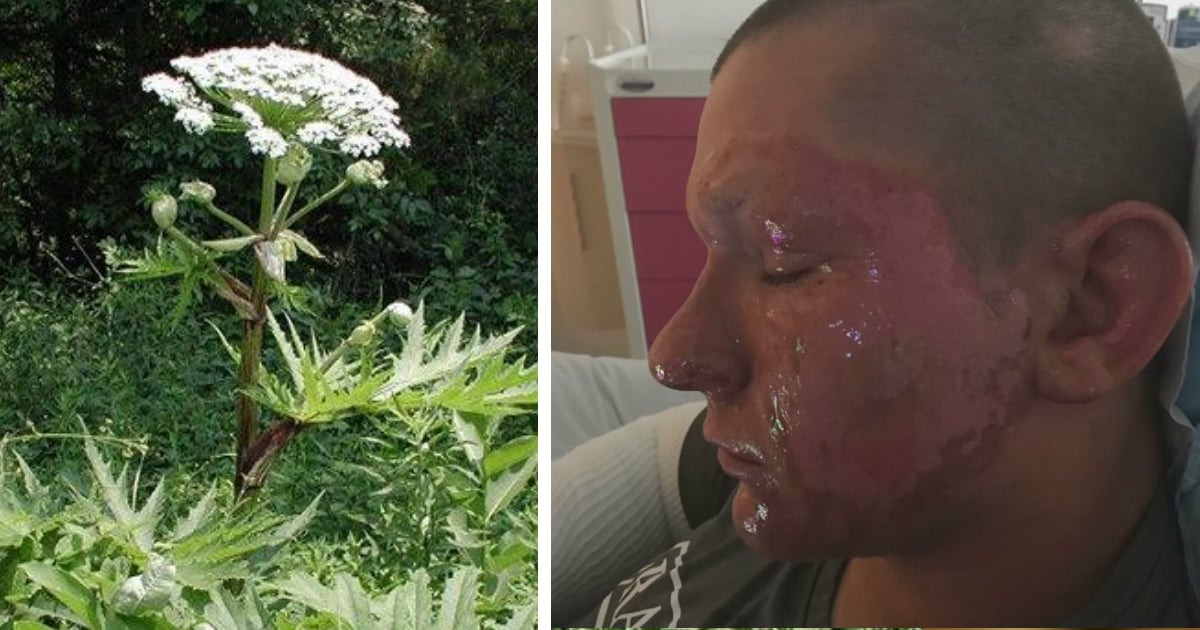At first, a Virginia teen thought he had a sunburn. But then his skin started peeling off. Here’s what you need to know about the highly toxic plant called Giant Hogweed that put him in the hospital.
Alex Childress was working a summer landscaping job in Spotsylvania, Virginia when he unknowingly encountered a highly toxic plant called Giant Hogweed.
"We were working outside a factory and I snipped down a bush and it fell and touched my face," Alex said. "I didn't pay any mind to it because I do it all the time."
RELATED: Doctors Are Prescribing A Type Of Antibiotic With Terrifying Side Effects
Considering how uncommon the plant is in the U.S., it’s not surprising Alex didn’t recognize it for the danger it was. By that evening, Alex’s skin was burning.
"I thought I had a bad sunburn,” he said. “I got in the shower and my face started peeling.”

Credit: GoFundMe
Fortunately for Alex, his mom, Chrissy, is a nurse. She recognized the peeling skin as third-degree burns and rushed her son to the hospital. She suspected a plant was to blame. And she was right!
More About Highly Toxic Plant Called Giant Hogweed
Giant Hogweed is native to Central Asia, but it made its way into North America in the early 1900s. What makes the plant so dangerous is the sap, which is phototoxic, meaning it reacts with sunlight.
“If you have never heard of Giant Hogweed, you're not alone. Giant Hogweed makes poison ivy look like a walk in the park,” a safety alert from Isle of Wight officials said.
Contact with the sap from Giant Hogweed can have dangerous effects. If sap gets on a person’s skin, any exposure to sunlight can cause blisters and severe burns. This is exactly what happened to Alex. If sap gets in the eyes, it can cause temporary or even permanent blindness.
The reaction to the sap can happen up to 48-hours from contact.
How To Spot Highly Toxic Plant Called Giant Hogweed
Giant Hogweed resembles several other common plants, such as cow parsnip and Queen Anne's lace. However, it’s typically much larger. Here are a few traits common to Giant Hogweed.

Credit: Click On Detroit
Common Signs Of Giant Hogweed
- Plant grows to about 7 to 14 feet tall, depending upon how long it’s been growing and whether it’s been mowed or cut
- Stalks are topped with clusters of about 50 to 150 white flowers, spanning about 2.5 feet across
- Large, deeply lobed leaves spanning up to 5 feet across
- Stems are green with extensive purple splotches and covered in coarse white hairs
- Stems are hollow and about 2 to 4 inches wide and ridged. They have a thick circle of hairs at the base of the leaf stalks
- Seeds are dry, flattened, and oval. They are approximately 3/8 inch long and tan with brown lines (oil tubes)
If you see a plant you suspect could be Giant Hogweed, do not try to remove it yourself.
“Do not mow or otherwise cut to control the plant mechanically; this increases the risk of exposure to the plant's sap, and its roots will readily send up a new stalk,” the Virginia Invasive Species website says.
It’s best to take photos and contact your local Department of Agriculture for advice.
RELATED: Boy Becomes Hysterical At Family Cookout And Common BBQ Menace Is To Blame
If you have contact with sap from Giant Hogweed, wash the area immediately. The longer it sits, the worse the reaction will be. Cover and/or avoid exposing the area to light and seek medical attention right away.
VA Teen Expected To Make Full Recovery
After recognizing the highly toxic plant called Giant Hogweed was to blame for Alex’s burns, his family and coworkers notified state agencies. Meanwhile, he was transferred to a burn center for treatment.
"They had me go in the shower for an hour and a half to wash and cleanse my body to get my pH level down," he said. "Then they cleaned everything else."

Credit: NBC 12
Alex then recovered in a dark hospital room for a few days.
"I'm feeling better," he said. "There are certain aspects that are painful like when they clean off dead skin or blisters, that's sore. Standing in the shower and having the water run over an open wound kind of hurts."
Thankfully, Alex will not suffer from any scarring from his burns. However, his skin will remain sensitive to light for several months. He and his family are hopeful the recovery period will not interfere with the teen’s plans to start college in the fall on an ROTC scholarship.
"Everyone has been really supportive," Alex said. "A lot of people have been checking on me, sending prayers and everything."
Alex’s healing will certainly be in our prayers and we’re so thankful he’s speaking out about his encounter to warn others.
Please be sure to share this story so others know about the dangers of the highly toxic plant called Giant Hogweed!
h/t: Independent
Featured Image Credit: Virginia Invasive Species (left) / GoFundMe (right)
YOU MAY ALSO LIKE: Mom Is Warning Everyone About Hidden Dangers At The Playground






